
Welcome to the Deeto Hub
A resource and community space for modern marketers, sellers, and builders using customer voice to grow — together.

A resource and community space for modern marketers, sellers, and builders using customer voice to grow — together.
This hub is built for anyone who wants to do more with the voices of their customers. Whether you're scaling advocacy, building trust with proof, or rethinking how to go to market — you're in the right place.
How-to guides and playbooks for building with customer voice
Campaign-ready templates and swipe files
Benchmark reports and reference best practices
Event recordings, expert sessions, and community spotlights
Ask questions. Share ideas. Trade wins. This is your space.
You don’t have to figure this out alone. The Deeto community connects you with other leaders using customer voice to build better GTM motions, faster-growing brands, and smarter strategies. If you are interested in joining when it launches, sign up below.
Automate advocacy management workflows
Dynamically generate customer stories and social proof
Eliminate manual reference management
Track and report advocacy impact on revenue
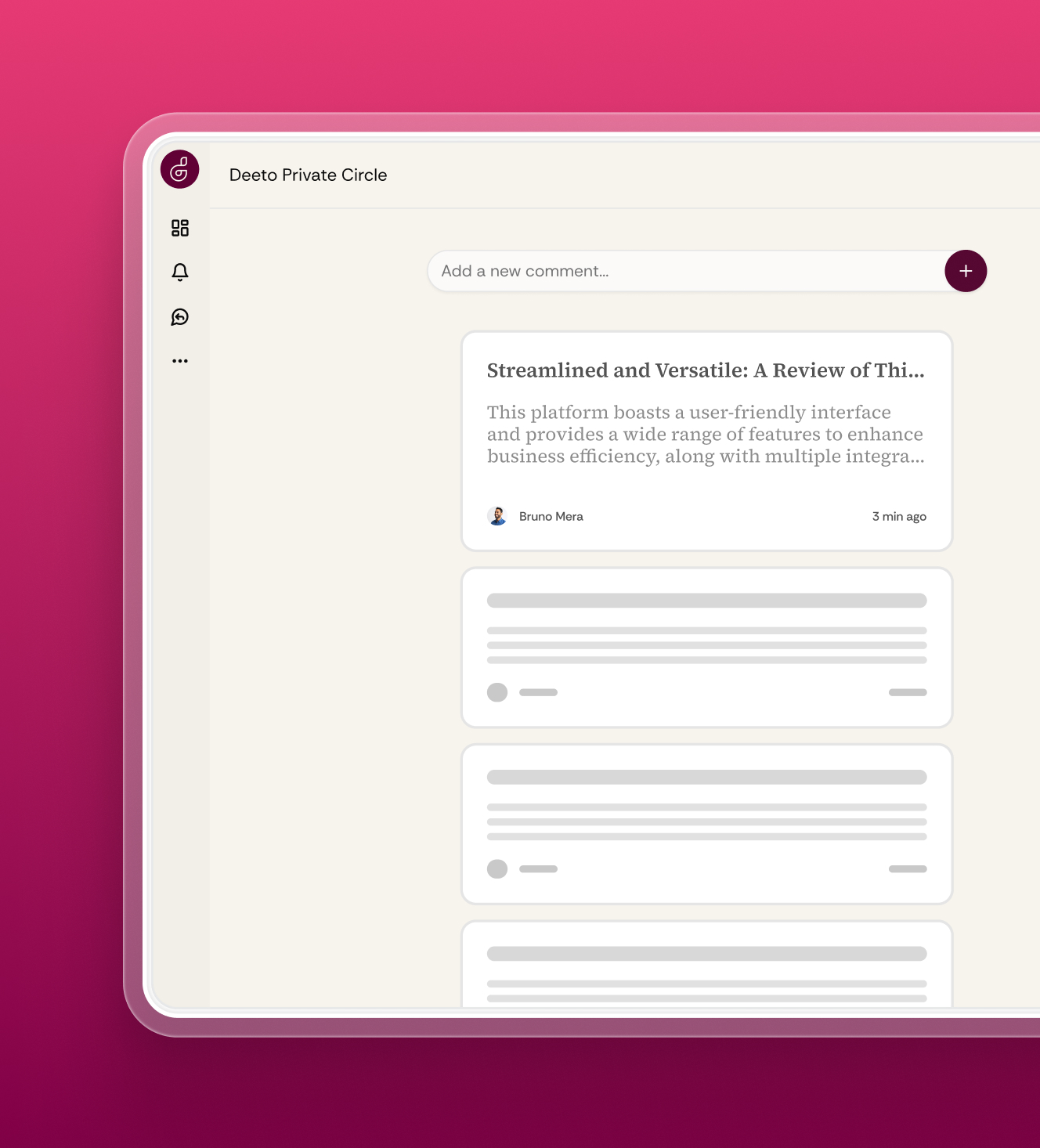
Discover practical guides, templates, and tools to help your team close more deals, faster.
When you hear "user-generated content," it's normally because Marketing needs it for lead and demand gen.
"We need to publish a testimonial for the new product launch."
But your sales team faces the same challenge with prospects and MQLs: they need to prove your product works. And buyers further along in the funnel use it to evaluate your product.
The more effectively you can use customer-generated content as a sales and buyer enablement tool, the faster you'll close deals.
That means integrating different types of UGC throughout the whole sales cycle.
User-generated content (UGC) refers to all the content your customers share about your brand or product.
Types of UGC include:
Since it comes from your customers themselves, UGC is authentic, unbiased, and relatable. It adds credibility to your brand and gives buyers context from a real user's perspective.
In one word: trust.
UGC proves your product works like you say it does. Prospects are far likelier to believe endorsements from their peers than even the slickest sales rep or most inventive forms of marketing wizardry.
Beyond the fact that customers need it to make buying decisions, user-generated content is the best way to capitalize on an existing asset (your customers).
You're already asking for testimonials, right? You're already publishing case studies and creating videos. Customers are already reviewing your product on G2 Crowd.
Whether you intend it to or not, UGC is driving at least some of your lead gen and sales. Customers publish it on their own accord, and you can’t always control that.
But, the ball’s in your court when it comes to capturing the voice of the customer. Let’s look at 6 ways to generate and publish user-generated content with intention.
Social networks account for the most important touchpoints between customers and your brand — 75% of B2B buyers use them during the sales process.
Since your sales team almost definitely uses social selling, they're also generally the first.
Social media also feeds primarily on user-generated content. So using UGC for organic and paid content on these platforms is a no-brainer.
There's a lot of room for creativity here. Depending on the platform (and nature of your product), you could share...
Meta for Business ran an ad to highlight business leaders using Meta's paid AI-powered services to grow their brands.
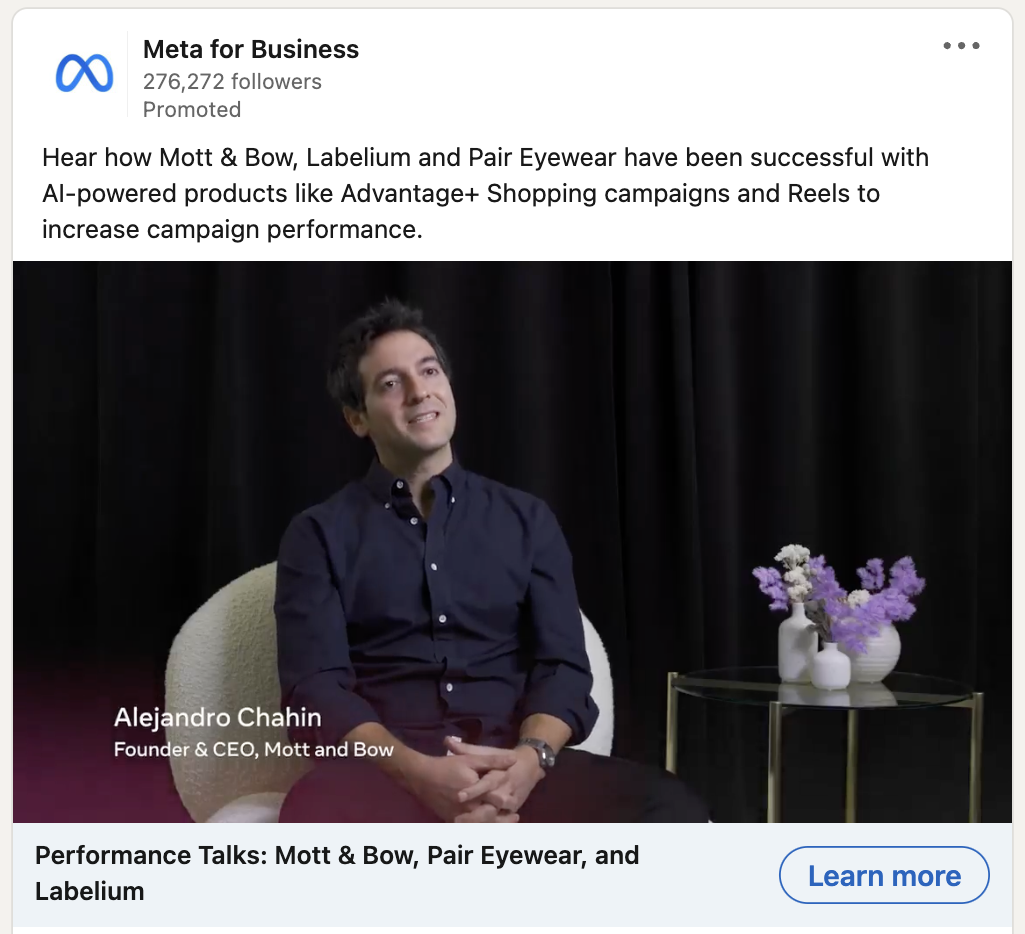
ClickUp uses videos its customers create while using the platform to share productivity hacks with current and prospective customers.
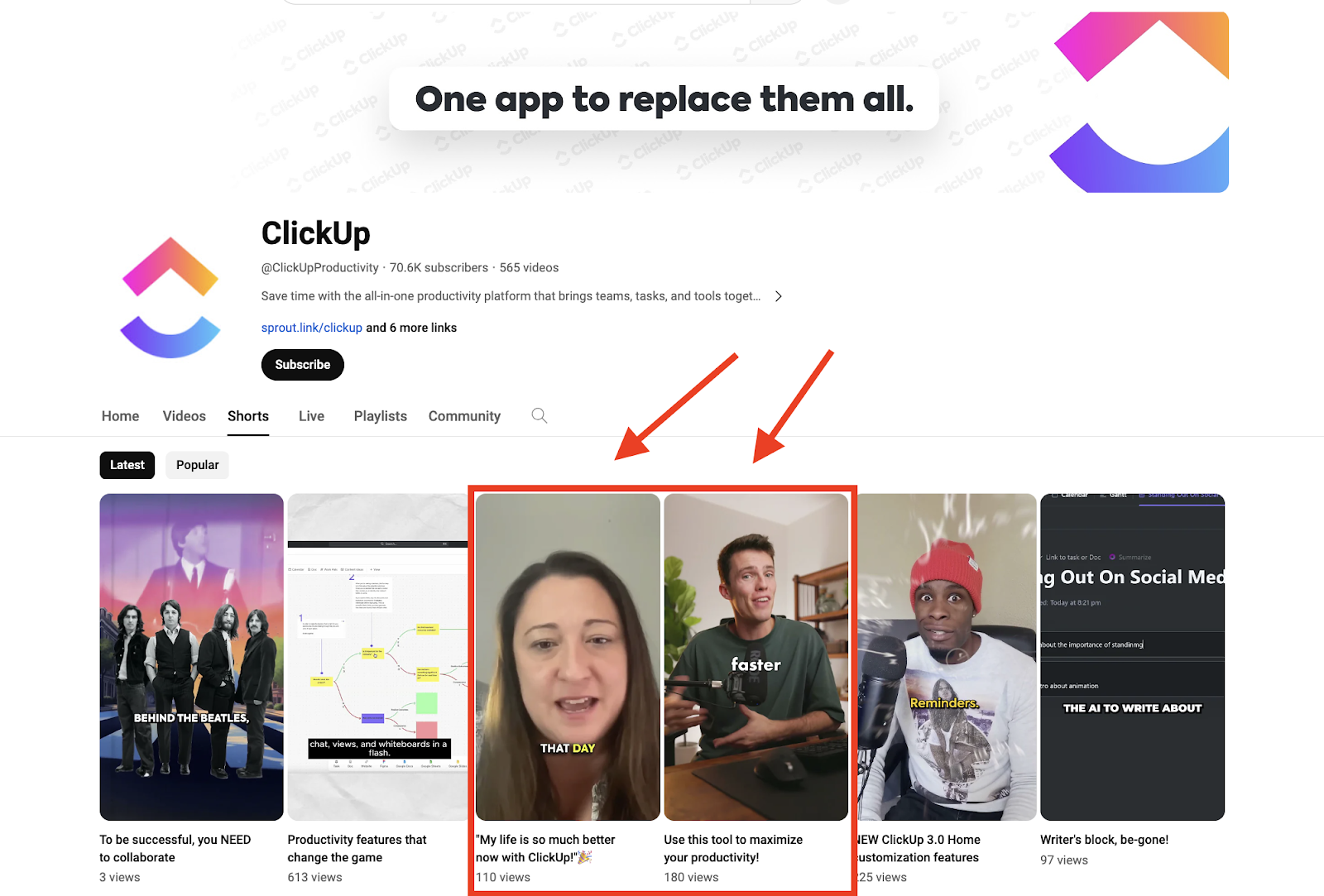
To encourage user-generated content for your social media pages, onboard your customers to your customer marketing platform.
From there, you can prompt them to record a short testimonial or write a review. And they can choose to grant you permission to use it.
Besides social media, search engines and direct website traffic account for the majority of your digital touchpoints.
Positive reviews on sites like G2 Crowd and Capterra are important because they show up first when buyers search Google for "best {your product category}" or "{your product} reviews."
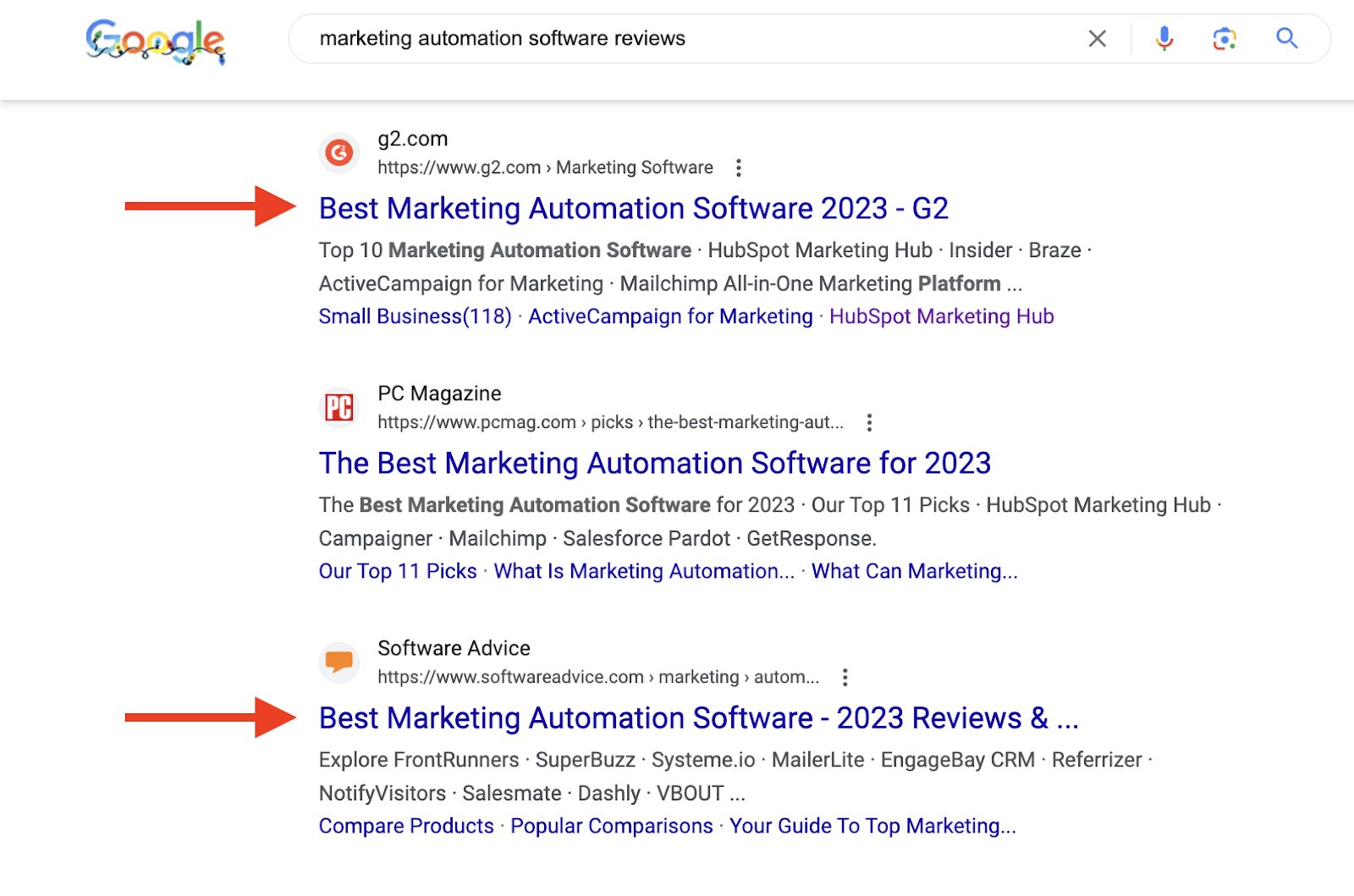
But you need social proof on your own site.
Most buyers are somewhere between 57% and 70% through the sales cycle before talking to sales. So you need tons of social proof in your marketing collateral.
Slack does an exemplary job of this. On every page, there are plenty of reviews and corresponding videos from real customers.

And right below them? A call-to-action to book time with a sales rep on the spot.
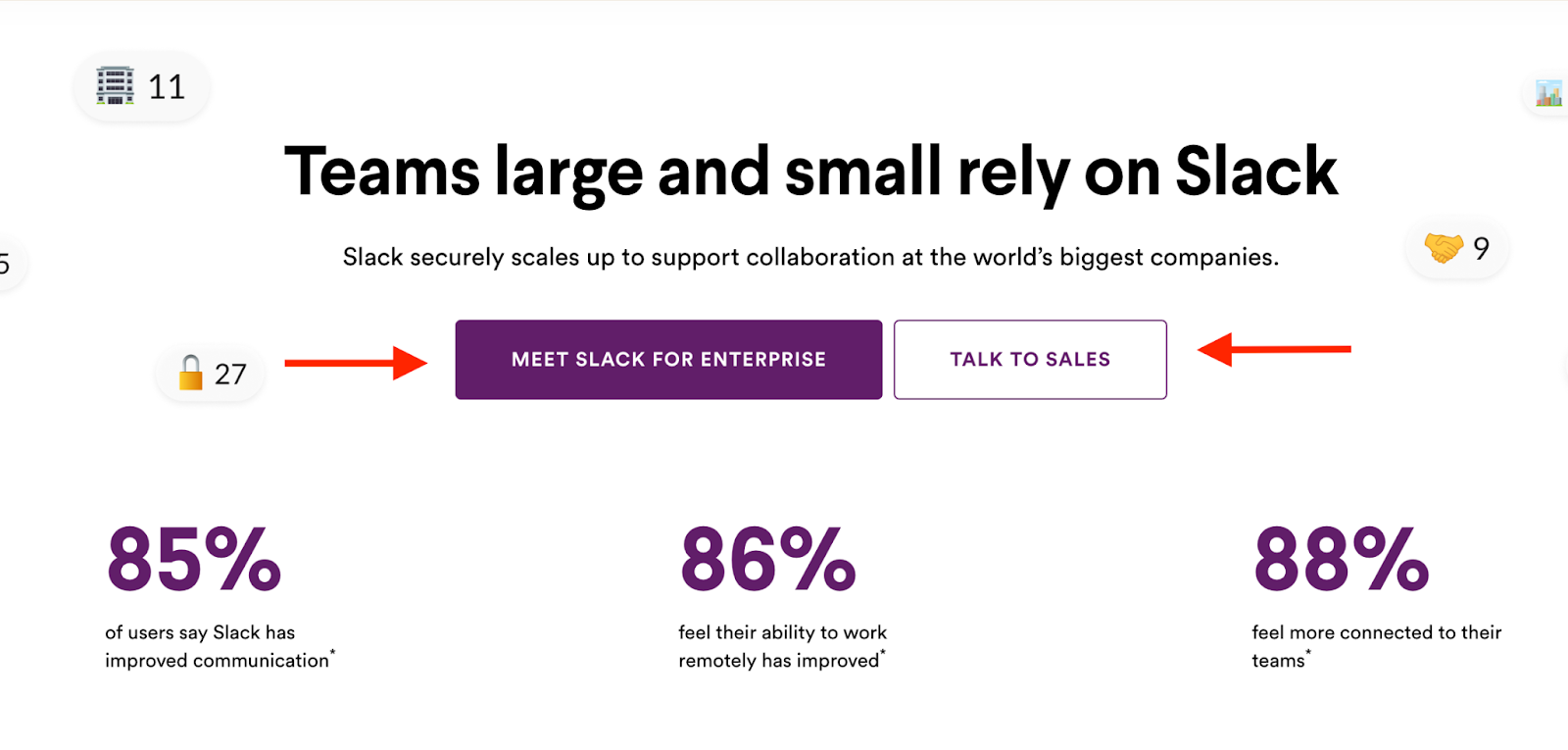
What's great about Slack’s content is, they don't stop at the sales pages. They incorporate customer feedback into their content.
Take this article, where they highlight three small business customers' feedback as the basis of a top-of-funnel post about general productivity tips:
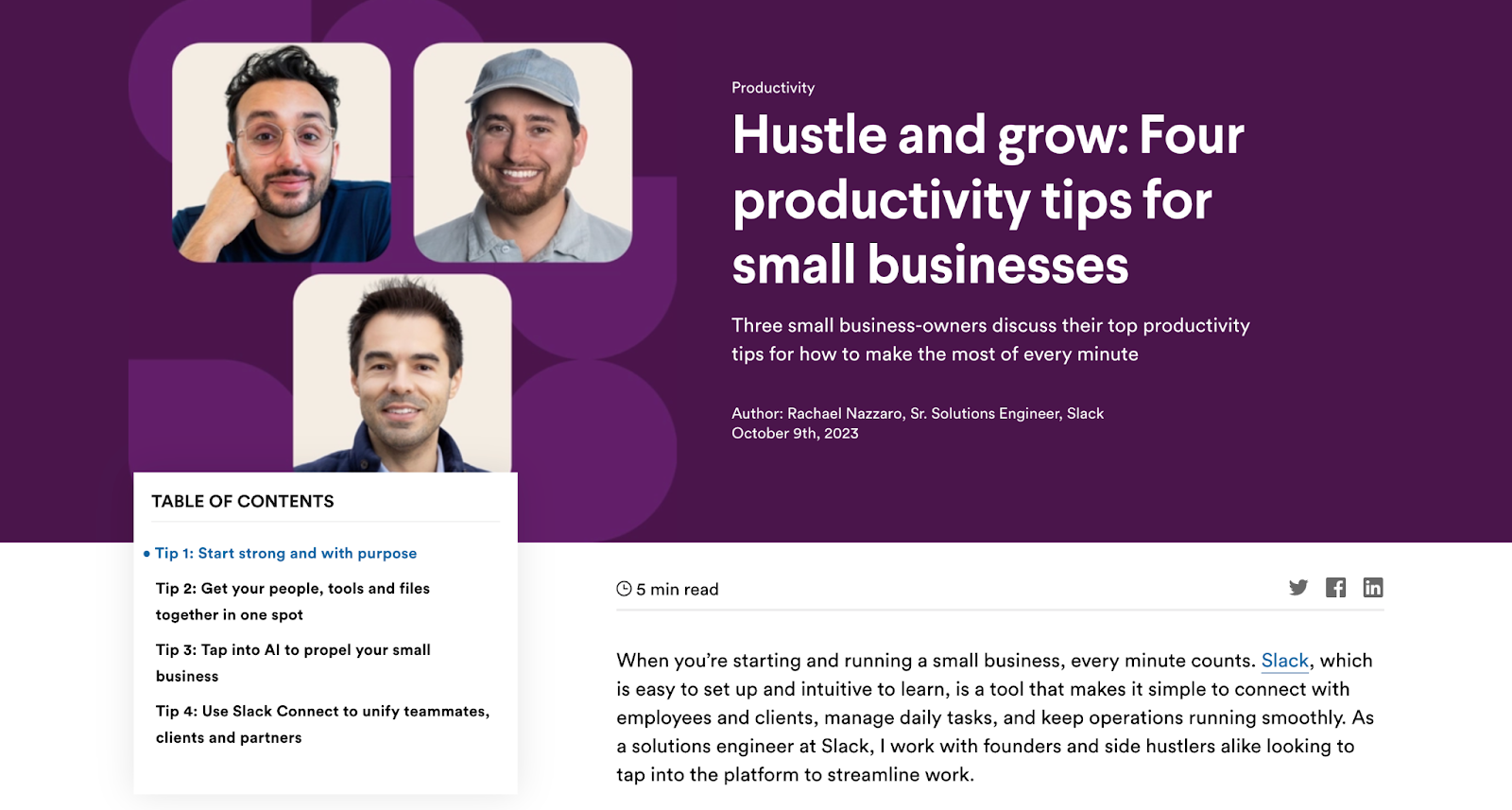
By using customer quotes and experiences to get their point across, they’re differentiating themselves from the 1,000s of boring “workplace productivity” articles out there.
And, for the opportunities further down the sales funnel, it nudges them closer to a "Yes."
With Deeto's new "Smart Widget" feature, you can auto-connect and embed customer reviews onto your website.
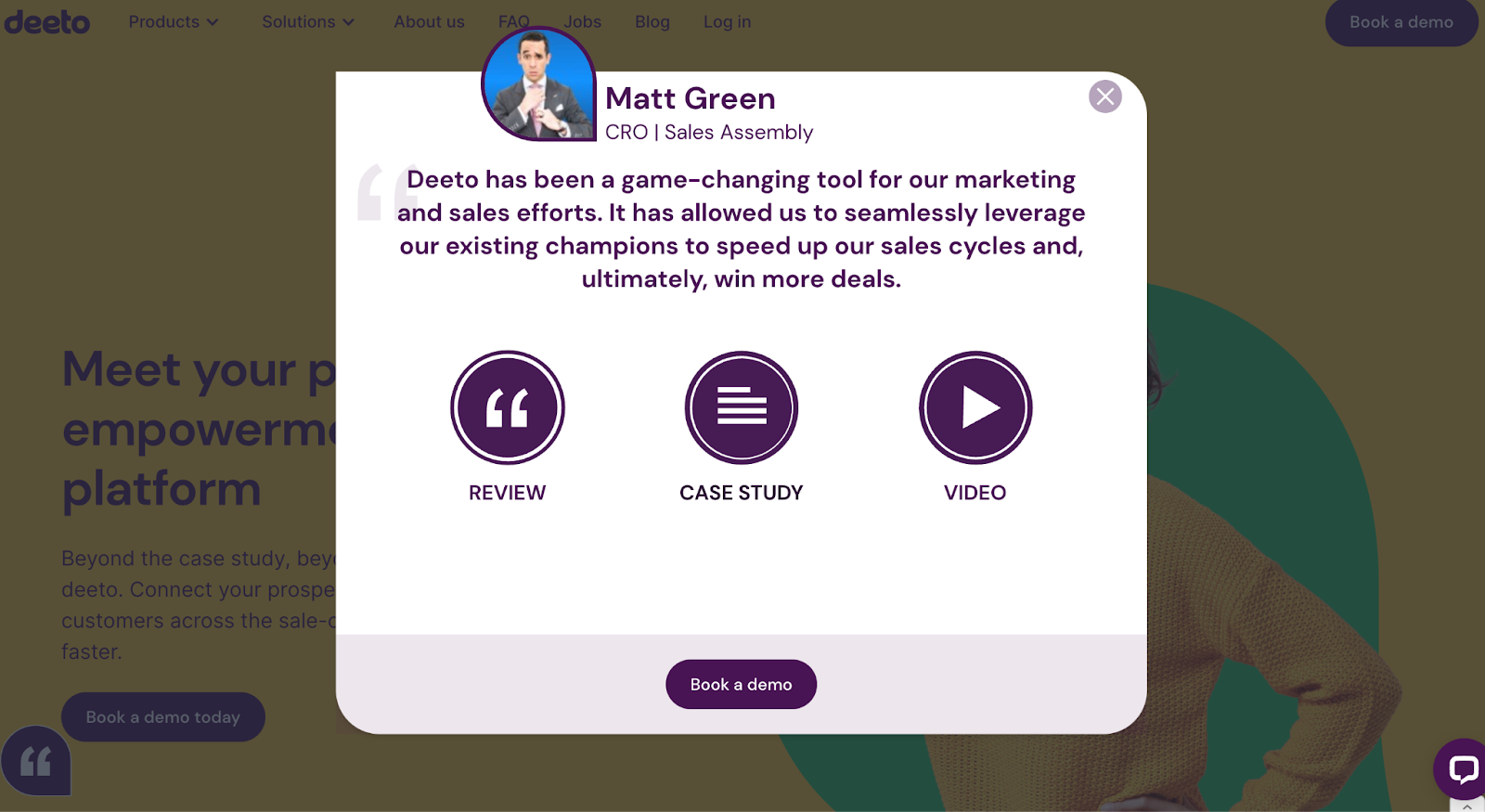
Depending on user behavior, our algorithm will display a dynamic, contextually relevant testimonial for your prospect.
For cold email prospects thinking, "Why should I talk to you?" social proof is one of the best ways to get your foot in the door.
But it's only effective when the value you drive for a customer aligns with your prospect's needs and goals. Otherwise, why should they care what you did for someone else?
When you integrate your customer advocacy platform with your CRM, it will automatically pull a prospect's firmographic data and current stage in the sales funnel.
From there, it'll compile a list of your customers with similar attributes and the stories/testimonials they've left in the system.
Since this works on a per-prospect basis, each sales rep can personalize their outreach. And they won't have to worry about missing the mark.
For those further along in the customer journey, references are the ultimate form of buyer enablement. Talking directly to another person like them is the last nudge they might need to sign that contract.
Sharing reference feedback in real-time is as simple as having each customer set their availability and having your sales team schedule meetings with prospects.
Retention is arguably the most important stage of the sales cycle, especially if you use a recurring revenue model (i.e., you're a SaaS company). That's why upselling is ~70% more affordable than new customer acquisition and increases revenue up to 30%.
As you retain each customer, you'll get a better and better idea of how they use your product. After a few months, you'll also know how they feel about it — what they like and what they struggle with.
Your CS team can use this data to their advantage every time someone's due for a renewal or reorder. They can share relevant stories from customers who integrated a new feature, or expanded their product use to multiple departments.
Customer advocacy is a positive feedback loop — when you feature them, they become more invested. This makes them better references and more valuable customers.
Your ability to use them as part of your sales strategy, though, banks on your ability to scale the advocacy process.
If not, you're missing tons of potential value from your customers.
Again, this is all 100x easier with a customer advocacy platform. Learn more about ours.

When you hear "user-generated content," it's normally because Marketing needs it for lead and demand gen.
When you're searching Maps for a new restaurant to try, which one do you pick: the one with 4,959 reviews and a 4.8-star average, or the one nearby with zero?
Maybe it's a new place. Maybe it's yet to be discovered.
You don't care. There's no point in rolling the dice on your dining experience when ~5,000 others already said the other was great.
In a nutshell, that's social proof. It's the idea that people tend to follow or trust others' actions and opinions when making decisions.
Your buyers are doing the same thing online. When everyone else seems to love your product, they're more likely to think, "I will, too."
There's a general trend of buyers trusting companies less and less. Growth marketing firm OGM just published its 2023 B2B Content + SEO Survey.
It uncovered two critical insights about the current state of B2B buying behavior.
On the other hand, 84% of people say they trust reviews and other forms of social proof as if they’re recommendations from a friend or family member.
There's a reason Twilio ditched its homepage headline in favor of the recognition it just received…
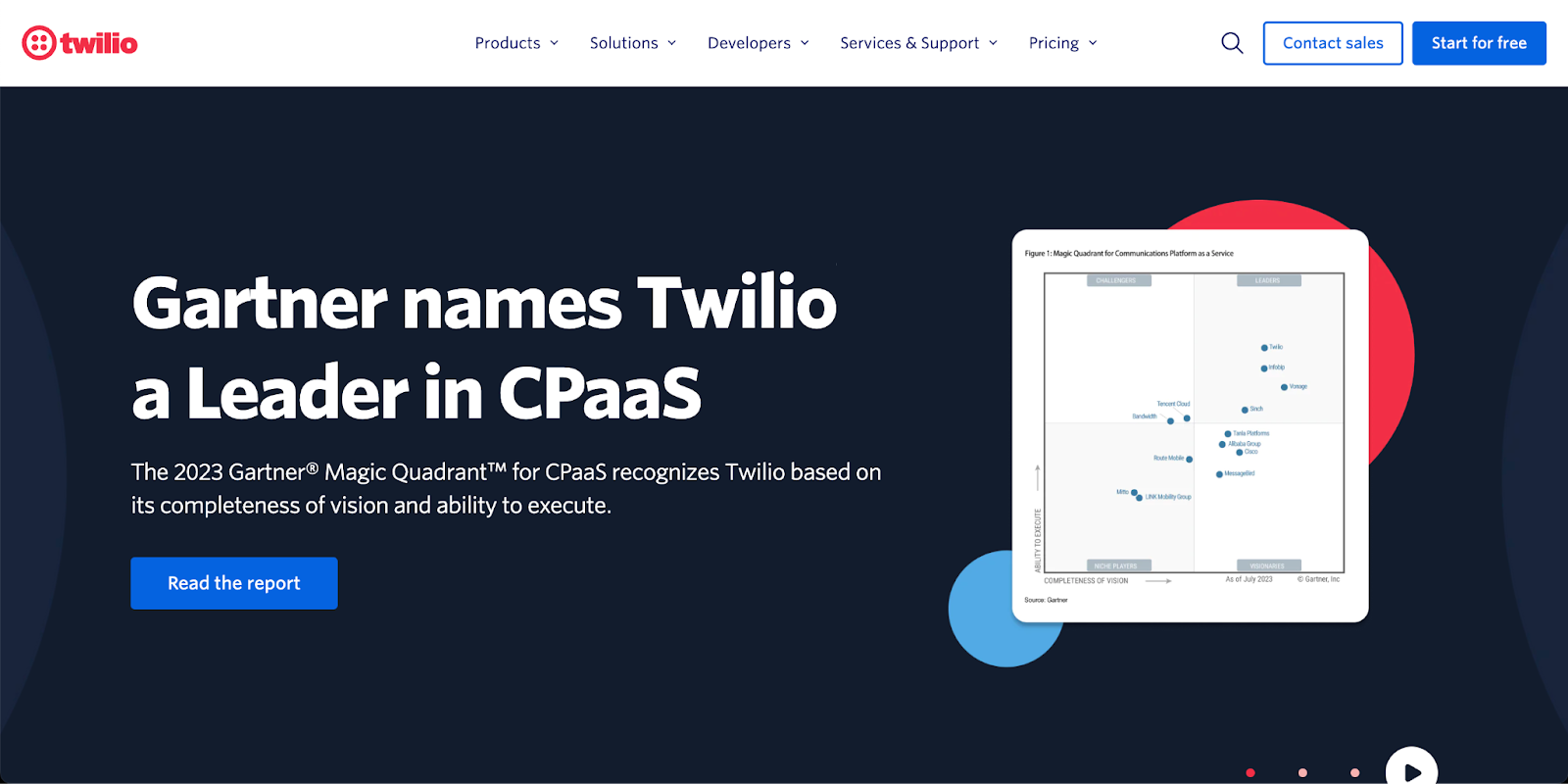
...and why they highlight case study snippets below the scroll.
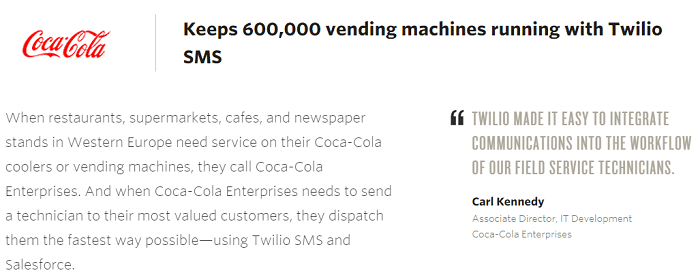
Even if someone's business is completely unrelated to vending machines, the fact Coca-Cola uses Twilio to manage 600,000 of them is impressive.
If they're in the market for communications software, this is far more compelling than a slogan or claim.
After reading a trustworthy review, 92% of B2B buyers say they're more likely to buy that product. That's why reviews nearly quadruple B2B website conversions.
Right on their homepage, A/B testing software company Unbounce includes this customer testimonial:

Not only does the customer specifically reference statistics, they include his photo, credentials, and the option to click through to see the testimonial.
Even without hard evidence of success, small details reinforce buyers' confidence in your product. Adding logos to a page, for example, increases sales by 400%.
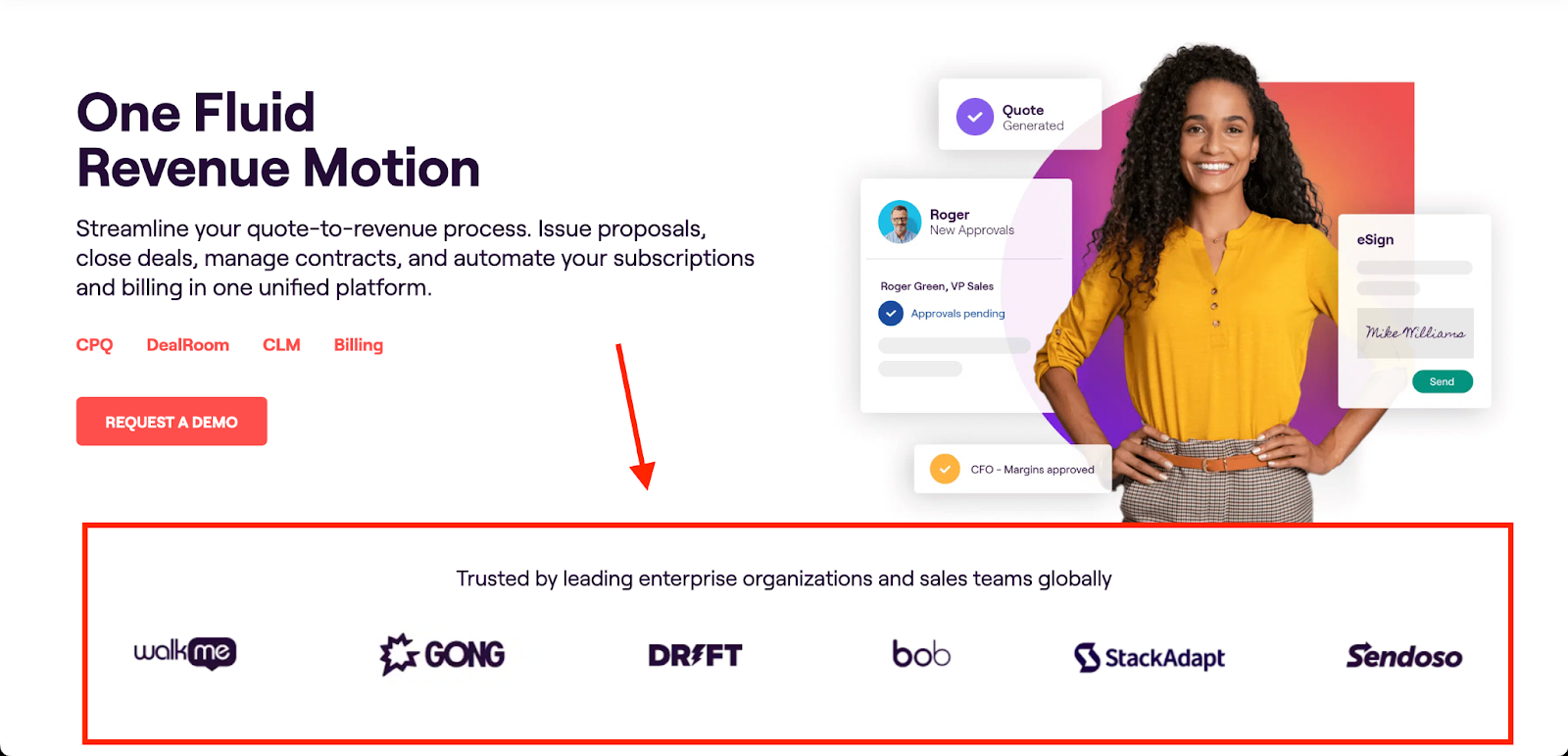
Websites with testimonials also receive 45% more traffic than those without. Positive reviews and UGC validate your product to Google, which in turn will present you to customers who use it to search for your product.
Between better SEO rankings, an organic traffic boost, and increased web conversions, social is directly responsible for a lower CAC.
Buyers have ~25% more trust in reviews than in sales reps. And 72% say they'd prefer a "rep-free" experience.
The sales profession is alive and well in 2024, but they have to take a more consultant-like approach. One of the best ways to do this is with customer success stories.
If you use software to gather and organize your customer feedback, this is easy.
On the seller's end, they'll see a clean list of content that applies to the prospect's particular use case.
This is way more efficient than browsing through random reviews on TrustRadius or G2 Crowd. And it's way more impactful than copy/pasting the same case study for every deal in your pipeline.
Today's buyers are immune to the clickbait headlines they see everywhere. On average, replacing that with social proof nets you a 4x higher CTR and reduces your cost-per-acquisition and cost-per-click by 50%.
There are plenty of ways you can do this.
You could highlight an award or certification.
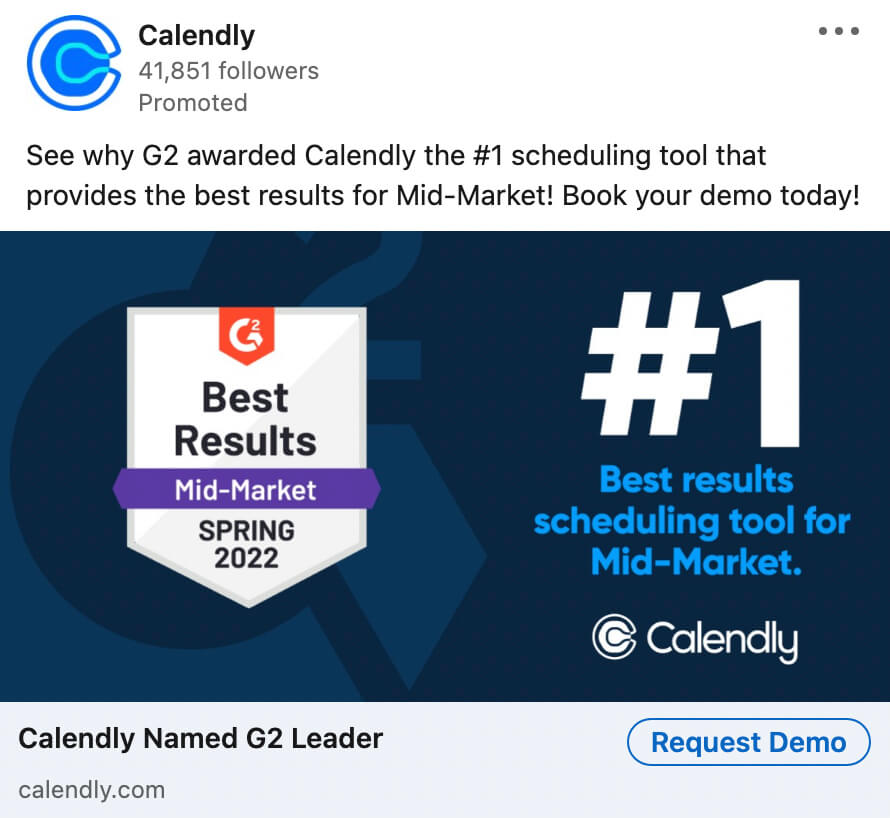
Or, you could spotlight a customer.

You could even use a jaw-dropping statistic.
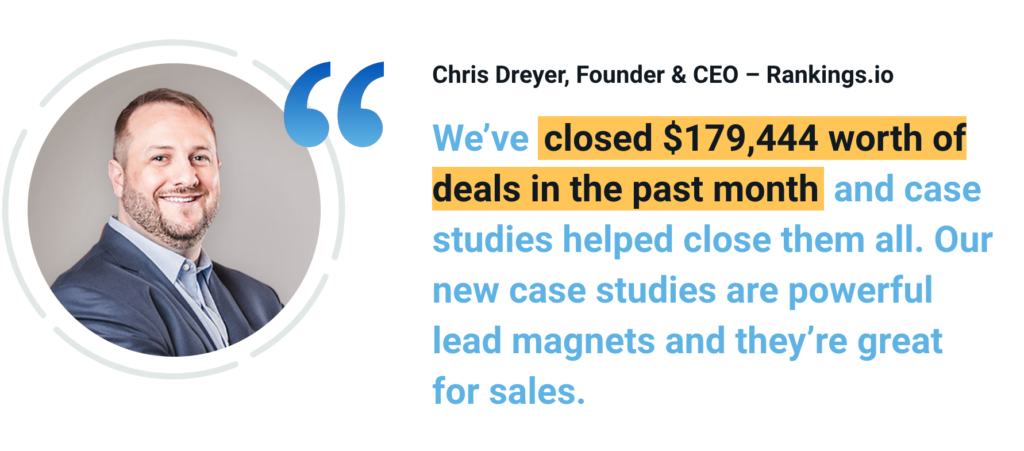
Since this info comes from the customer, you need a continuous feedback loop between your team and customers who already love your product.
What does this mean for you in 2024? You need a platform that handles it for you.

Why is social proof important? Discover how it builds trust, shortens sales cycles, and drives conversions.
Picture this: Everyone's buzzing about your product. And you didn't have to give up an arm and a leg to get their attention.
They're telling their friends, "You have to make the switch."
They're writing great reviews.
And your P&L is looking good.
Word-of-mouth marketing = social proof, a.k.a. the Holy Grail of brand validation. And as a business, that's exactly what you're after.
In simple terms, word-of-mouth marketing is the passing of information about a company's products or services from one person to another. Any time someone mentions your product to someone else (in-person or over the web), that's word-of-mouth marketing.
Here are a few examples:
If you've ever tried a product or service, then left a review or told a friend about it, you've participated in precisely what we're talking about.
When you hear about a product from a friend, you're more likely to trust it.
That's because word-of-mouth comes with the validation of someone else's experience. And people trust experiences over marketing campaigns and sales pitches.
86% of B2B buyers say word-of-mouth is the most influential factor when they make buying decisions. The vast majority don't trust ads anymore. And, according to data from Drip, less than one-third consider sales reps to be "trustworthy."
By engaging your customers on social media, integrating UGC into your sales cycle, and garnering social proof with intention, you're setting yourself up nicely for winning over potential customers.
When customers find it easier to trust you, four things happen:
In the last 5 years, the average CAC across all industries has increased 60%. When it's easier for you to attract customers and close deals, it costs considerably fewer resources to land them. So, by focusing heavily on word-of-mouth, you're looking at a healthier P&L.
It isn't just about making sure your brand is talked about in the right way. It's about putting strategies in place to help those conversations naturally occur. At scale.
Here's a look at 3 ways word-of-mouth is changing in 2025 (and how you can adapt):
User-generated content (UGC) is content your own customers (or users) create. Think reviews, testimonials, and user stories.
It's one of the best forms of word-of-mouth marketing because you can use it in your own sales and marketing efforts (with customers' permission, of course).
To adapt, make it easy for customers to create and share user-generated content. Encourage them to do so by offering incentives and creating a community for them to share their experiences.
In the modern B2B sales landscape, you're dealing with several decision-makers. And each prospect in your pipeline will have different pain points and challenges.
So, you can't have just any testimonial or review. You need a diverse range of social proof that caters to different roles and pain points.
When you're asking your customers for reviews and testimonials, encourage them to mention specific products, features, and benefits. That way, you can use them on corresponding landing pages, and your sales team can share them with the prospects they'll actually have an impact on.
Putting intention behind word-of-mouth marketing means building a customer advocacy program. And when you do that, you'll realize your customers are all comfortable with different forms of contributing.
Some prefer to write reviews and testimonials. Others will be happy to jump on a reference call with a prospect.
To get the most out of every customer's experience, you have to play to their communication preferences.
The essence here is personalization. If you feel like doing it 100% manually, you can. But a customer advocacy portal (where customers can choose how they'd like to contribute, set their availability, see the results their contributions lead to, and get rewarded when they do) definitely simplifies it.

Unlock the power of word-of-mouth marketing to build trust, grow your brand, and drive better conversions.
When it's time to make a purchase decision, nobody on Earth is more influential than someone who's been in your shoes.
Paid ads and company-sourced content get prospects in the door. But customers won't sign the dotted line without knowing for sure that others have seen success.
Voices championing your brand do more for your sales and marketing than any other asset. 92% of B2B buyers are likelier to make a purchase when they see a positive review, and social proof can increase your conversion rate by 270%.
Companies know all about the value of customer reviews, referrals, and success stories. That's why they invest in customer advocacy programs.
"Customer advocacy" refers to a customer voluntarily endorsing your brand or its products. A customer advocacy program is an ongoing, intentional effort to encourage this endorsement through reviews and testimonials, or by participating in marketing activities like case studies and customer referral calls.
Creating a successful customer advocacy program means...
...with the ultimate goal of demonstrating your credibility, driving more sales, and increasing customer loyalty.
There are multiple ways satisfied customers can become rockstar brand ambassadors.
Your customer advocates come in all shapes and sizes.
Some will have no problem leaving a review on G2 Crowd or sending you a quick written testimonial. Others are happy to take a hands-on approach and hop on a reference call alongside a sales rep.
The core focus of your customer advocacy strategy should be to play to each customer's strengths and interests.
Your customer advocacy efforts are like every other marketing initiative. To get the most out of this, you have to clearly define...
That way, you can encourage feedback that reinforces your value prop, feels relatable to prospects, and is useful to your overall marketing strategy.
Then, tie it all to KPIs you want to improve — web traffic, conversions, retention, sales cycle time, inbound lead gen.
For whatever reason, tools seem to be an afterthought for most companies. But, out of all the reasons you can't scale your customer marketing program, software is the solution to pretty much every one.
If you want to turn loyal customers into brand advocates, start by thinking about how they'll interact with your brand and the tools you use to enhance those interactions.
Look for a tool that:
Otherwise, you'll get one or two pieces of customer feedback. But you'll struggle to do it again, and again, and again.
Skip the investment now, and you'll end up backtracking later.
You want to avoid turning your brand-advocate relationships into transactional ones. When you launch your customer advocacy initiatives, start with existing customers who:
Once you've narrowed it down, figure out what motivates these candidates to speak up.
Forrester analyzed dozens of successful advocacy programs and found four common types of advocates:
To create a mutually beneficial relationship between you and your customers, you need to identify which type of person they are. Then, you have to channel their motivations to make their participation fulfilling.
For example, a Collaborator might think a full-fledged case study is the coolest idea in the world (so they'd respond in a timely manner, and it'd actually get done). Meanwhile, Educators are your most likely candidates for reference calls.
This could be something as simple as:
"Leave us a review on G2 Crowd. When you do, we'll give you $20 off your next month."
But...think bigger.
With a customer advocacy platform, you can send a simple invitation email to your most loyal customers. They can onboard themselves through a series of questions, set their preferences, and give their first customer feedback within a few minutes.
Like I pointed out above, there are several different types of advocates. They'll all have different communication styles and preferences (based on their own motivations).
Although each loyal customer will have intrinsic motivators, you still have to make things interesting and rewarding for them.
Assign a value to each advocacy activity that's proportional to the customer's input.
On their end, they should be able to see their progress towards different rewards. On yours, you'll see which customers have contributed what.
Once you've developed a scalable system for gathering customer feedback and UGC, take your goals from Step 1. Then, find out how you can use what you've gathered to achieve them.
Give your sales and marketing team access to your customers' insights, so they can incorporate them into their content, cold outreach, and sales conversations.
Customer loyalty programs should have some overlap with your advocacy activities. A weekly newsletter and occasional webinar for your most engaged customers can keep them in the loop, while also giving them a sense of exclusivity.
This is where you can talk about new product features, upcoming events and conferences you'll be attending, and company news. You could use these channels to invite them to beta test new features, too.
And, of course, use these messages to shout out your most active and loyal customers and reinforce their value.
Customer satisfaction is great. It's even better when you know what to do with it. With Deeto, all your advocates are in one place, for your sales and marketing teams to turn into true brand ambassadors. See how it works.

When it's time to make a purchase decision, nobody on Earth is more influential than someone who's been in your shoes.
Your customers want to help you, they just don't know how. Or maybe, the prospect of doing so isn't compelling enough.
Building a successful customer marketing program is simple. But there's a big difference between "simple" and "easy."
If you're trying to incorporate customer advocacy into your sales activities and marketing collateral but you aren't seeing the results you want, maybe it's time to revisit your approach.
Where should you start looking, though?
From what we've seen, these are the four main problems getting in the way of a successful advocacy program:
If you agreed to help your friend move into their new apartment for a few hours, but then found out that they expected you to spend the majority of your day packing and moving boxes, would you be happy?
Probably not.
Would you be a repeat volunteer?
Under very few circumstances.
Your participants need a consistent, guided experience. Vouching for you requires an ongoing time investment, so it's unfair to make them hunt for relevant content or struggle with clunky submission processes.
From the customer's standpoint, every touchpoint should have zero friction.
If your program is missing any of these elements, you'll never implement customer advocacy at scale.
Calling on the same customers again and again is a recipe for high burnout. If you ask the same people for too many favors, they'll go from feeling flattered to feeling exploited.
Not only that, but your "one-size-fits-all" approach won't capture the full spectrum of your customer base.
When building your customer advocacy program, start by segmenting your customers based on their use cases, satisfaction levels, and potential willingness to advocate for you (i.e., through NPS surveys).
Don't limit yourself to execs, either. Identify your top customers and reach out to a diversity of individuals from each company you work with.
Pulling the best advocates for your program is really just the start of the battle. Each participant has motivations behind getting involved in your program:
To make their experience fulfilling, you have to gamify the experience by giving tangible rewards proportional to their participation (a small cash reward for a review, for example) on an ongoing basis. But you also have to pinpoint what makes them tick.
What do they value besides money? Do they want some kind of PR for openly endorsing your brand? Or does helping others simply make them feel good?
When someone tells you they appreciate something you do for them, how does that make you feel?
Valued. Recognized. Connected?
I bet.
It's the same with customer advocacy (or any social behavior, for that matter).
Good news is, positive reinforcement is quite simple. A little bit really does go a long way. And there's nothing worse you can do than say nothing.
Something like:
"Jessica, thanks again for taking the time to refer {Candidate Name}. It’s customers like you who make our team's day-to-day work worthwhile. We'll keep you posted on their status! 😄"
It's worth mentioning you should always ask your advocates' preferences before shouting them out. Some will appreciate public recognition, while others prefer an enthusiastic Slack message.
Sometimes, creating strong advocates isn't the issue at all. It could be a problem with how your team uses their social proof to generate leads and close deals.
It's customers' experiences and feedback that ultimately sway purchase decisions. So the content your prospects see needs to resonate with them on a personal level. It can't just be a random list of quotes from customers.
To maximize the impact of all your advocates' efforts (thereby increasing their engagement in your program), you have to match their advocacy with the right positioning and audience targets.
Based on CRM data and use cases, Deeto's Smart Matching tools show sales reps which customers and content would resonate with their prospects, so every advocate-prospect connection is meaningful and impactful. See it for yourself.

Can't turn happy customers into advocates? Discover 5 key reasons why and how to fix them for stronger brand advocacy.
Every marketer perks up when they hear "social proof" for the first time. That enthusiasm fades as soon as they realize it isn't as simple as publishing a few case studies and putting 3 testimonials on their landing page.
Usually, when we look closer at companies’ social proof and customer marketing programs, we notice 3 main factors that hinder their success.
The issue isn't a lack of happy customers. Nor is it their unwillingness to help.
Every loyal customer is someone you could actively involve in customer acquisition and growth initiatives. The biggest problem is that most advocacy programs start at the end and work backward.
When people think of social proof, referrals, references, case studies, and word-of-mouth normally come to mind.
Yes...these are the outcomes. But how do you get them?
They don't magically appear. And customers (almost) never volunteer themselves.
Without a way to systematically collect and manage your customers' goodwill, it inevitably slips between the cracks.
You might have a portal for referral partners or a simple reference form. At best, those will help you land one-off case studies and reviews. And they still require manual intervention or the customer to call themselves to action.
Broadly, the traditional approach to customer advocacy looks like this:
The problem is, it's never that simple. To get the high-value content you need, there's always back-and-forth trying to schedule and coordinate, answer questions, and make sure everything turns out well.
With you as the intermediary (and them without any structure), it's kind of like inviting your friend over for dinner but asking them to cook everything themselves.
Not ideal.
Customers want to help, but they don't have the bandwidth or patience to jump through hoops for you. As a result, most companies find themselves cherry-picking the most vocal and responsive customers, rather than engaging their entire customer base.
Why should they refer friends to your business? Why should they take time out of their busy schedules to talk about it, write reviews, and create content?
Think about what would make the process worth it for them:
You don't have to do anything crazy. But points, cash rewards, and personal recognition from your CS team will make the experience a lot more personal, engaging, and rewarding for them.
Even with a structured approach and software to help you, your customer marketing program still has a few gaps.
Simply put, the size of your customer base or extent of your program doesn't matter. What matters is how you engage with your customers and their impact on your brand.
Solve these issues, and your advocacy program will become a well-oiled machine.
Completely removing the human element of customer engagement will make your program seem disingenuous. But a high-touch approach strains your team, customers, and, by extension, results. So you'll want to consider which touchpoints make sense to automate.
Here are a few places to start:
Managing your referral program, collecting reviews and testimonials, setting up reference calls, and curating content in one place makes all the difference.
Each prospect in your pipeline cares about a few use cases and scenarios where your product or service can make a difference. Segmenting customers who join your program into specific profile types and matching them with specific types of reference calls, marketing assets, or case studies makes your social proof more relevant.
In the Deeto platform, customers onboard themselves, choose how they want to help, and set their availability. Deeto's smart matching and auto-scheduling streamline customer-prospect matching and call setup. Generative AI turns feedback into case studies that reinforce your unique selling points. See how it works.

Every marketer perks up when they hear "social proof" for the first time.
You know the drill - your prospect is on the cusp of closing the deal, but they need one more reassurance: a reference call.
Cue any AE’s worst nightmare. Finding the proper reference, getting them to respond to your emails, coordinating schedules between the prospect and reference, and the list goes on.
Although most of us can agree that having your happy customers share their raw and authentic experiences with a prospect could be a game-changer, the hustle and bustle of making it happen are just too much.
Let’s see how we can change that.
The typical scenario in the B2B Tech industry involves your Account Executive (AE) trying to seal the deal. Prospective clients turn to review platforms, seek permission to contact existing customers for insights, and initiate a complex communication process between AE, CS or Customer Advocacy, and your references. This time-consuming process is never complete without an abundance of back and forth emails, scheduling, issues, and an overall hustle for all parties involved.
Not only does this process pose a threat to your deals at the most sensitive stage, but it creates real and unnecessary stress for all teams involved. The complexity and lack of organization in today's social proof procedures hinder the efficiency of your deals and impact the overall experience for your team, your references and the prospect. In a world accustomed to fast and streamlined digital interactions, a company seeking optimized growth practices must adapt to provide a smoother, more accessible referencing experience.
1. One-stop-shop: Establish a unified platform, be it a customer advocacy platform or a dedicated Slack channel, where interactions with satisfied customers can occur seamlessly.
Pro tip: A good first step is to create a CRM field where you can mark your top customers, and invite them all to join one communication channel (be that a Slack channel, Email list, etc.).
2. Personalize their experience: Empower your customers by allowing them to choose how and when they contribute. Implement personalized scheduling for reference calls and tailor prompts for reviews to make their involvement convenient and meaningful.
Pro Tip: Create a Google form and ask your customers to share which advocacy tasks they would be willing to participate in (write a review, record a video testimonial, participate in public speaking events, etc.).
3. Acknowledge their support: Implement a personalized reward system to express gratitude at each step. Consider sending thank-you cards, offering gift cards of their choice, or even making a donation to a cause they support.
Benefits
Implementing the changes mentioned above will completely transform your reference game. From recruiting powerful advocates, to smart-matching them with the right prospect for highest conversions - there’s a whole lot to gain.
Enter Deeto – the solution to revolutionize your B2B Tech social proof strategy. In the Deeto platform, we simplify the process, allowing customers to onboard themselves, choose their preferred way of assistance, and effortlessly set their availability. With smart matching, auto-scheduling, and advanced AI, Deeto transforms customer feedback into a robust social proof library that authentically reinforces your unique selling points.Oh, and we take care of the rewards as well.
Experience the next level of referencing management with Deeto and witness a seamless, stress-free journey for your team and valued customers. See how it works.

Learn how to turn customer references into a powerful tool for trust, growth, and conversions.
Intro
Are you tired of spending thousands of dollars and way too much time trying to prove your worth to your prospects? We understand your struggle. Here's an interesting thought - We believe that there's one, very versatile tool, that most companies underutilize - Social proof.
Yes, this ancient (and sometimes vague) lost art.
Or, if you ask us - the new word-of-mouth for the business world. In this blog post, we'll dive into why social proof is the key to boosting your sales while keeping your GTM budget under control and how utilizing your happy customers can directly help you close more deals.
Understanding the Power of Customer Advocacy in Modern Day Business
In today's competitive business landscape, prospects are inundated with a multiplicity of information and suggestions as to all of the tools they can use & buy. This red ocean of never ending propositions brings with it a few distinct challenges.
- Our trust levels as buyers are on a downward spiral.
- We have a limited attention span being divided between a multiplicity of overcrowded channels.
- The competitive landscape has become a unified stone of paid ads and cold calls.
Customer advocacy provides a powerful way to cut through the noise, boost the authenticity and capture the attention of potential customers. By harnessing the positive experiences and recommendations of existing customers, businesses can build a solid foundation made of trust and credibility, stand out in the crowded marketplace, and create a new and leaner angle to their sales efforts.
The Role of Social Proof in Digital Word-of-Mouth
Simply put, social proof has become the new word-of-mouth. With the abundance of online reviews and recommendations, prospects rely heavily on the opinions and experiences of others during the research phase and even more so, before making a purchase decision.
This shift in our behavior highlights the importance of leveraging social proof to not only gain trust, but to provide solid assistance in your prospect’s pre-purchase research and evaluation efforts.
If you quickly zoom-out, you will notice that the leading brands of the world have been putting social proof at the forefront of their strategy for years - whether through reviews, an entire ““Customers frequently viewed” section, or one-on-one reference calls. Even Apple has made the conscious decision to use a picture taken on an Iphone by a real customer as part of their recent NYC billboard campaign - rather than hiring the best photographer in town.
Practical Steps to Implement Customer Advocacy in your Company
In the Deeto platform, we help you take your social proof game to the next level. From allowing customers to onboard themselves, letting them choose how they want to help, and making it easy and frictionless for them to create social proof in a way that is easy and convenient. With our advanced ML and AI we are able to transform the most basic customer feedback into an abundant social proof library that reinforces your unique selling points in the most authentic way. See how it works.

Learn how to increase word of mouth marketing and why social proof remains a powerful growth driver today.
Introduction:
In today's technology-driven world, where innovation is relentless, and competition is fierce, the role of tech salespeople has become increasingly crucial. They are the connecting tissue between technology companies and potential customers, responsible for conveying the value and benefits of their products or services. However, as the landscape becomes more complex, so does the perception of credibility within this realm. This blog post delves into the shifting dynamics, highlighting how the credibility of tech salespeople is being challenged while the credibility of real customers remains solid.
The Traditional Credibility of Tech Salespeople:
The Changing Technological Landscape:
Credibility Challenges for Tech Salespeople:
The Rise of Customer Advocacy:
The Shift Towards Authenticity and Transparency:
Leveraging the Power of Customer Advocacy:
Conclusion:
The credibility paradigm within the tech sales industry is shifting, with the credibility of salespeople being challenged while the credibility of real customers remains solid. To adapt to this changing landscape, tech salespeople must embrace authenticity, transparency, and customer-centric approaches. By acknowledging the informed and empowered customer base and leveraging the power of customer advocacy, salespeople can rebuild trust and establish themselves as credible sources of information and guidance in the ever-evolving world of technology sales.

In today's technology-driven world, where innovation is relentless, and competition is fierce, the role of tech salespeo

See how Deeto helps you turn customer voice into a GTM advantage.
© 2025 Deeto. All rights reserved.